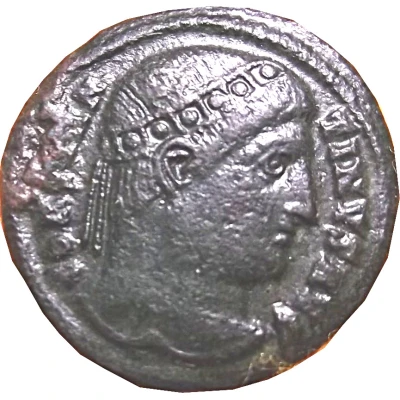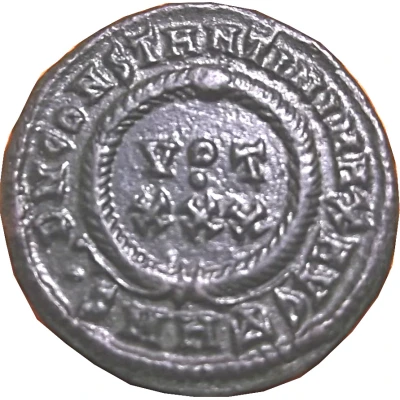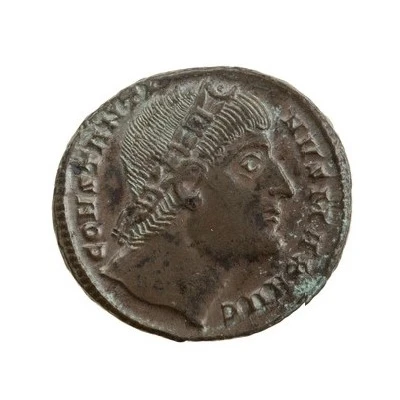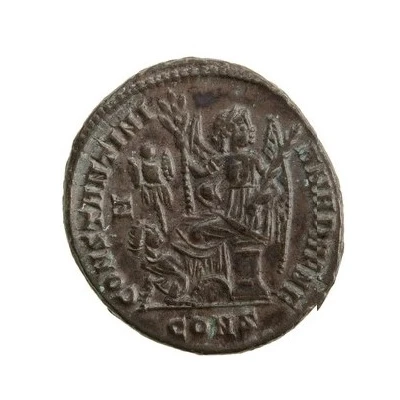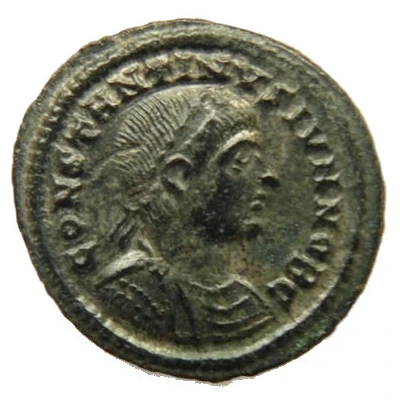
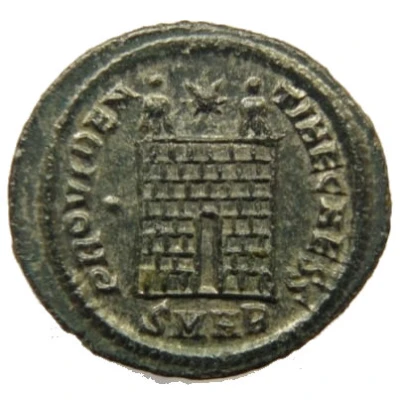

© Kenobi
Nummus - Constantinus II PROVIDENTIAE CAESS; Heraclea
| Bronze | 3.10 g | 20 mm |
| Issuer | Rome › Roman Empire (27 BC - 395 AD) |
|---|---|
| Emperor | Constantine I (Flavius Valerius Constantinus) (306-337) |
| Type | Standard circulation coin |
| Years | 327-329 |
| Value | Nummus (1⁄7200) |
| Currency | Solidus, Reform of Constantine (AD 310/324 – 395) |
| Composition | Bronze |
| Weight | 3.10 g |
| Diameter | 20 mm |
| Shape | Round (irregular) |
| Technique | Hammered |
| Orientation | Variable alignment ↺ |
| Demonetized | Yes |
| Updated | 2024-10-05 |
| Numista | N#60664 |
|---|---|
| Rarity index | 76% |
Reverse
Camp gate with two turrets, without doors, varying number of stone layers; star above.
Dot in left field.
Mintmark and officina in exergue.
Script: Latin
Lettering:
PROVIDEN-TIAE CAESS
•
Unabridged legend: Providentiae Caesares.
Translation: Providence of the Caesars.
Edge
Smooth
Interesting fact
The Nummus - Constantinus II (PROVIDENTIAE CAESS; Heraclea) coin was part of a large-scale currency reform implemented by Emperor Constantine the Great in the early 4th century AD. This reform aimed to standardize the Roman currency and reduce inflation, which had become a significant problem in the empire. The Nummus coin was introduced as a new denomination, and it was made of bronze, a more affordable material than the previous gold and silver coins. This change in material helped to increase the circulation of coins and promote trade throughout the empire.
